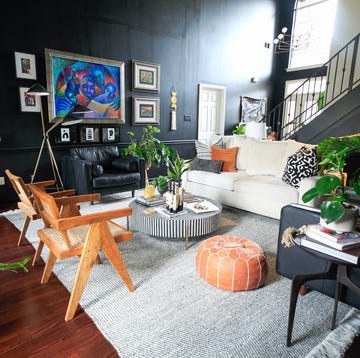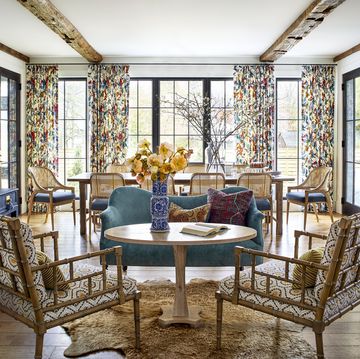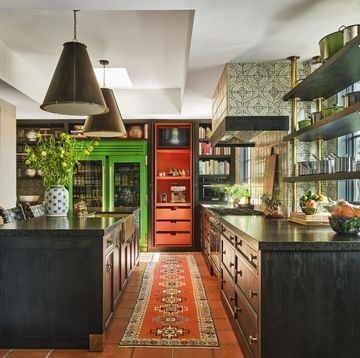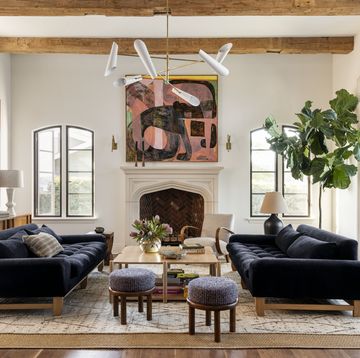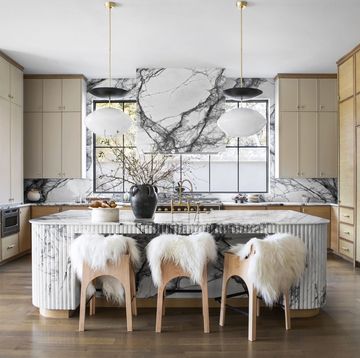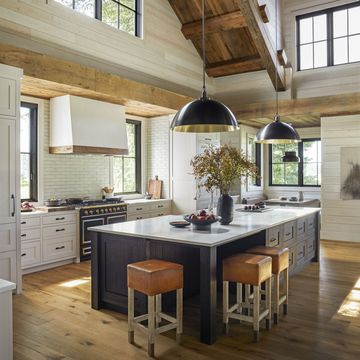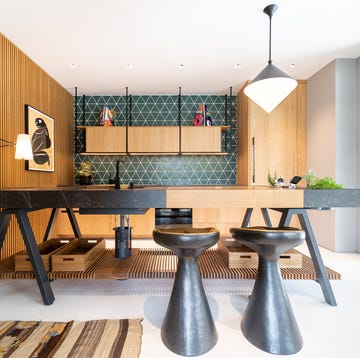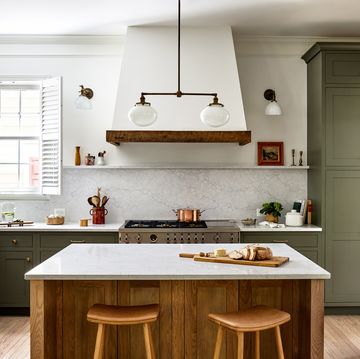When swallows scattered fennel seed over Beanacre Farm’s West Garden, owner and gardener Gerard Pampalone could have rooted out the interloping botanical. Instead, he left it; fennel now fills in the formal borders beautifully. Pampalone was a novice gardener when he and his wife, Arlene Carpenter, bought this Fairfield County property in 1995. It took him three years to clear the neglected land (preserving the heirloom irises and peonies) and a decade for his garden plans to come to fruition. His self-guided gardening education included seven garden tours across Europe, where he learned structure is key. “You have to have the bones,” he explains. Flowers follow—with or without intervention from the local fauna. “Cede control to Mother Nature,” Pampalone advises. “You’ll be pleasantly surprised by what she’ll do.”
West Garden
Pictured above.
The half-acre plot peaks in midsummer, later than most gardens. Over perennials like baptisia, clematis, and wild parsnip, Pampalone layers some 400 annual plants he grows from seed.
Four obelisks, after those at Claude Monet’s garden in France, provide room for morning glories and clematis to climb.
Fenced Garden
A quartet of Limelight hydrangeas anchors this area, which local garden designer Paul Winsor helped conceive.
The barn stands beyond a bed of sun-loving false sunflowers, yellow and pink coneflowers, rudbeckias, and zinnias.
Cottage
Planted 20 years ago, a lavender-and-cream Japanese wisteria climbs the pergola, flowering every May. Window box plants are updated seasonally.
See another Fairfield County, Connecticut, garden that relies on clean, formal geometry—but with strikingly different results.








